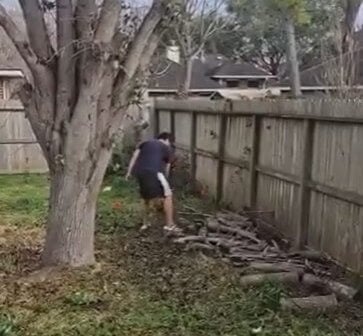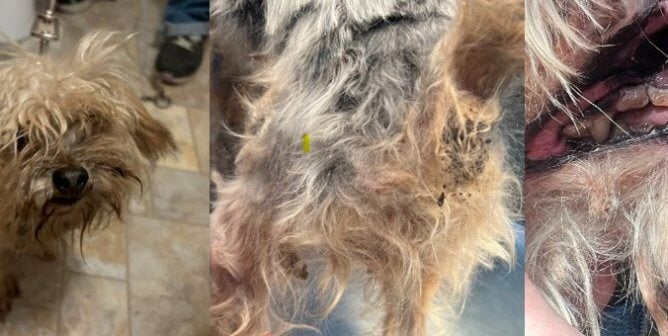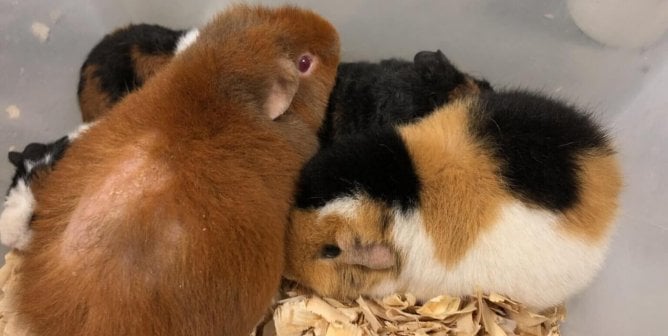Finding the Right Home for Your Companion Animal
Like children, animals are extremely vulnerable and unable to protect themselves from abuse and neglect. That is why it is absolutely essential to proceed with caution when attempting to place an animal in a new home. Many people would like to have an animal companion, but not everyone is a responsible, compassionate animal guardian. It’s important to screen potential adopters very thoroughly to ensure that the animals you place today will still be cared for next year and even 10 years from now.
Before Saying Goodbye, Consider This
Are you reluctant to part with an old friend but feel you have no choice? Be sure you explore all your options before taking that big step. Once an animal leaves your care, can you be absolutely certain that he or she will be safe and treated well for the rest of his or her life?
For example, if your animal friend is exhibiting problematic behaviors, consult a veterinarian first to make sure illness isn’t the root cause. If that’s not the problem, try a behaviorist or a humane trainer. Bear in mind that perceived problem behaviors are often caused by stress and will surely be aggravated by a transition to a new home, so if you haven’t been able to solve the problem yourself, how likely is it that a new guardian will be able to? In frustration, the new guardian could even end up giving away, chaining, or “punishing” the animal in some way Don’t hesitate to contact local humane groups or PETA for advice.
If financial difficulties or extended travel is the problem, ask a family member or trusted friend to care for your animal temporarily. Also, humane societies, breed rescue groups, pet sitters, and military support organizations may agree to foster your animal friend.
Finding an apartment that allows animals can be easier if you network through local humane societies and animal rights groups. PETA’s website has tips on finding animal-friendly housing, as well as a list of apartment-locating websites.
If you or a family member is allergic to the animal, there are a variety of strategies for alleviating symptoms, including medications and supplements, frequently vacuuming carpets and furniture, using a HEPA filter, and frequently washing scatter rugs and bedding (both yours and your animal companion’s). For more information, see PETA’s allergy factsheet.
If a divorce or serious illness is affecting your ability to care for your animal companion, it is vital to make solid arrangements to ensure their continued well-being. See PETA’s factsheet for advice.
Best Practices for Finding the New Home
If you are advertising your animal in the newspaper, at your vet’s office, or online, never say “free to a good home,” the five favorite words of “bunchers” (dealers who sell animals to laboratories), dogfighters, and psychopaths seeking animals to torture and kill. Please see PETA’s factsheet on the dangers of “free to a good home” ads.
Always ask for photo identification (legitimate callers will not object when you tell them why). Write down the person’s full name, driver’s license number, address, and telephone number, and explain that you will do a home check prior to placing the animal. Ask for (and check) references from veterinarians, neighbors, landlords (if applicable), and employers. Before taking out any newspaper or online ad, consider putting up photos and ads at veterinary offices and pet supply stores and asking local animal shelters to “courtesy post” your animal on their websites or on their Petfinder.com pages.
It is vital to screen potential adopters very carefully in order to assess their attitude, commitment, and level of responsibility. Get to know serious prospects—sit down and have long conversations with them about the reasons why they are interested in adopting an animal, how they cared for other animals in the past, etc. Get a feel for the adopter’s personality and lifestyle and how they would mesh with the specific needs of the animal you are trying to place (for example, a busy family or elderly person may not be able to provide a young, active dog with adequate exercise).
Questions to Ask
- Why do you want a dog or cat?
You’ll want someone who wants an animal to be part of the family and a household companion. Beware of people seeking a “barn cat” for “mousing” or a large dog for guarding purposes (guard dogs are usually chained, neglected, abused to “make them mean,” denied veterinary care, and discarded when their “usefulness” ends). If someone wants an animal as a gift for a friend or relative, insist that the person who will spend the next decade or more with the dog or cat be involved in the selection. If children call, ask to speak with their parents.
- Have you had animals before? What happened to them?
People who have never had animals before should be advised of the considerable time, expense, and responsibility involved in caring for them, including exercise, food, flea and heartworm preventive treatment, and veterinary costs. Someone who has had several animals stolen, hit by cars, lost, or given away is a poor prospect.
- If you move, travel, or have children, what will you do with your animals?
Caring for an animal is a 10- to 15-year commitment. Remind prospects that they will have to make arrangements for someone to care for the animal during vacations and must plan for the animal’s needs if contemplating a move. Ask what arrangements will be made under those circumstances. Also, many people abandon animals after they have a baby, so ask about the prospective adopter’s plans regarding children and how that will affect the animal’s life.
- Where will the animal live?
Be wary of people who talk about having a dog or cat live or sleep in the backyard, on the back porch, or in a doghouse, shed, barn, pen, garage, or basement. These people are almost certainly not interested in making the animal a household companion. Similarly, people who plan to leave the dog in a crate all day while they’re at work or all night don’t understand how detrimental intensive confinement is to dogs emotionally as well as physically and should be turned down.
- (For dogs) Is your yard fenced?
A well-fenced yard is advisable (although it’s never safe to leave an animal unattended outdoors). People without an enclosed yard might allow a dog to run loose, which is illegal in most places and very dangerous, or they might chain or pen the dog outside—a frustrating, miserable existence. Ask apartment dwellers how often they plan to walk the dog (look for a minimum of four times a day—imagine only being able to use the bathroom two or three times a day!). Also ask who will let the dog out at lunchtime. (It’s inhumane to make a dog try to “hold it” throughout an entire workday.)
- (For cats) How do you feel about declawing?
Declawing is an extremely painful mutilation that involves amputating the last digit of each of the cat’s toes. Declawed cats often develop behavioral problems, such as biting and urinating outside the litterbox, which can lead to their abandonment. If a prospective adopter seems concerned about damage caused by cats’ scratching or expresses the intention to declaw the cat, look elsewhere. Let the person know that humane societies often have cats who have already been declawed up for adoption.
- Do you own or rent your home?
If the prospect is not a homeowner, ask to speak to the landlord to see if animals are permitted. Thousands of animals are “given up” each year after being discovered by landlords.
- Who else lives in your home?
Make certain that all other members of the household also want a companion animal and are aware of the caller’s plans. Also, determine the ages of any children in the household. Families with young children should be aware that normal puppy and kitten play behavior includes jumping, scratching, and biting and that dogs and cats must be protected from rambunctious children.
- Who will be responsible for the animal’s care?
Be wary of the parent who plans to delegate responsibility for the animal’s care to a child, since this could mean that no one will provide regular care or the animal will be neglected and/or given away when the child loses interest.
Adoption Checklist
- Visit the prospective adopter’s home (twice—first without the animal, and then, if that goes well, again with the animal). Ask to meet the other members of the family and observe their interactions with the animal. Ask about any other animals who currently live in the home or who lived there in the past. Look for signs of previous neglect (such as a dilapidated doghouse surrounded by mud) and for safety hazards (e.g., a yard littered with junk). Never feel pressured to leave an animal with someone. The animal’s safety depends on you, so making sure that this is the right home is something you must take very seriously.
- Make sure the adopter understands the essentials—and the costs—of responsible animal care, including veterinary care, humane (positive reinforcement) training, flea treatment, ID tags, harnesses and leashes, heartworm preventive, and a fence for dogs.
- Microchip and spay or neuter animals before they leave your care. If you’re thinking of stipulating in the adoption agreement that these procedures be done afterward, bear in mind that it can be extremely difficult and time-consuming to try to compel people to comply after they have the animal in their custody.
- Ask for a nominal adoption fee. This will help weed out unscrupulous and cruel people like animal dealers and dogfighters, as well as those who may not be willing to make a serious commitment to care for the animal. Honest, responsible, well-intentioned individuals looking for an animal companion should be willing to pay a small fee, especially if you explain why. The fee should cover the cost of sterilization and microchipping—approximately $75 to $100 at most low-cost spay/neuter clinics.
- Provide a care package to help ease the animal’s transition. This can include a collar, a harness, a leash, toys, treats, and food, as well as a scratching post and a carrier for cats. Books and leaflets on animal care are also helpful. If possible, provide the adopter with all the animal’s medical records and history.
- Don’t hand over your animal unless you are completely confident that this is the right placement. If you have any doubts about the adopter or the potential new home, or if the situation feels wrong in any way, don’t be afraid to say, “I don’t think this is a good fit” or “Let me think about it”—your animal friend’s safety and happiness depend on it.
- Follow up a week or two later, and again in several months, to see how the animal is doing.
What You Can Do if You Are Unable to Find that ‘Good Home’
Please don’t rush into a placement because you are pressured by time. If you are unable to find an excellent home for your animal, take him or her to a reputable open-admission animal shelter. Beware of so-called “no-kill” shelters and “rescues.” Many such facilities are actually hoarding facilities masquerading as “rescues,” which warehouse animals for months or years in cramped, filthy conditions and deny them basic veterinary care. “No-kill” shelters may also foster animals out to hoarders and other unsuitable people. They often give animals away or charge only a minimal adoption fee, putting animals at risk of being placed in an unsuitable home.
Choose a shelter that (a) checks out prospective homes carefully, (b) spays and neuters all animals before adoption, (c) does not give or sell animals to laboratories or guard dog companies, (d) uses an intravenous injection of sodium pentobarbital for euthanasia (just as veterinarians do).
Never sell or give any animal to a pet store. Retail stores do not screen potential adopters—they simply sell them to anyone willing to pay the going rate. Many pet store customers buy on impulse and are unable to care for an animal properly.
If your animal friend is old, sick, very shy, aggressive, or fearful or has serious, hard-to-resolve behavioral issues and you cannot find a home with someone you and the animal trust implicitly, the kindest, most humane course of action may lie in turning to a veterinarian or shelter for euthanasia. If so, be sure to stay in the room to comfort your old friend as you say goodbye.
Resources
Sample Adoption Application and Adoption Agreement
Make two copies, one for the adopter and one for your files.








